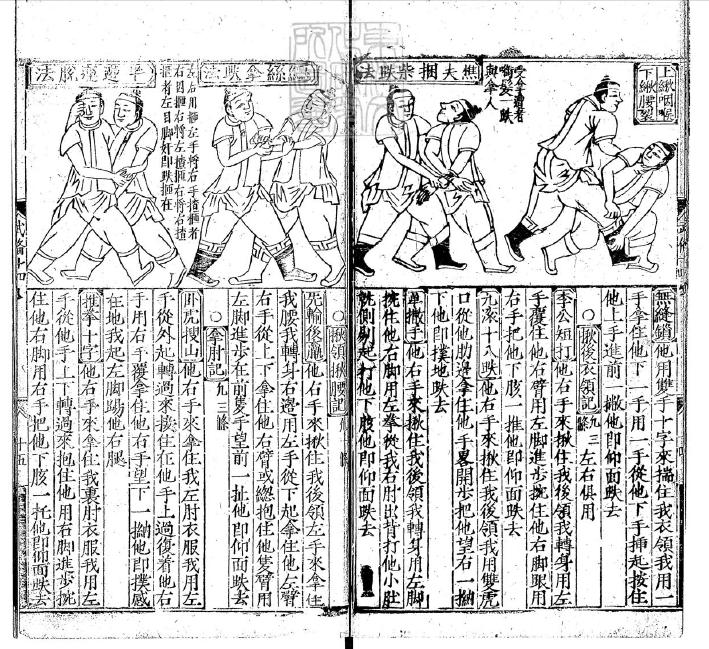I've been workshopping the idea of
Social Muscles for a few months. Even after years of blogging I still meet people who are baffled by the idea of
cultivating weakness, so I'm trying to find vocabulary that makes this traditional group of ideas more "accessible."

Everyone is familiar with the idea of social stress. Social stress happens whenever there is any challenge to a person's preferred status. There have been a lot of rat studies about social stress (their hair tends to fall out). There have also been a few studies of British civil servants (their hair falls out too). Generally the lower you are in the social hierarchy the more stress. That's probably because the lower you go in a hierarchy, the more people their are competing. Positions at the top of social hierarchies are generally less stressful, but that depends on how
real the challenges are and how often they are coming--the opposite could be true.
I used the word
real in the last sentence, but social status is actually mostly about illusory things like who has the most friends or the biggest house, or even more illusory things like, 'do you
believe in _____' (insert any group defining marker like: god, unions, aliens, PCB's, barefoot running...) It's nearly impossible to have a conversation without experiencing some social stress.

Our experience of social dynamics is largely unconscious. Experiences with improvisational theater, intense conflict, or other dramatic breaks from normal behavior can lift the veil off of social dynamics. Suddenly you just 'wake up' and notice that every word, glance, sound, or movement is changing peoples status before your eyes. Most people are status specialists, one person fights to be dominant, another looks around for a strong person to be number two to, others show their top row of teeth and nod "yes" a lot-
- they are happy subordinates. There are infinite degrees of social status and it can change in the blink of an eye, or rather, it always changes in the blink of an eye. Most people have a preferred status but status is constantly in flux, changes happen in quantum leaps. Good teachers are masters of changing from
low to
high status in a flash, one moment the students find themselves cheerfully interacting with each other, helpful, and cooperative, the next moment they are frozen listening to the teacher's instructions with bated breath.
All of these status expressions are
physical. They come from deep inside the body and they are effected by our perception of personal and architectural space and ownership. (
See my blog post on Body Mapping.) These largely unconscious movements and expressions arise from torso movement in and around the organs. You
can consciously activate them, but once they are active they are hard to control. You can decide to get angry, but then deciding to calm yourself back down ain't that easy. It's a lot of work to fake being happy--try doing it for an extended period of time and the stress will become debilitating.
Social Muscles are all the muscles of the torso that create, control, assert, and manage social status. When we practice internal martial arts we want to let-go
(tou kai = dissolve outward) all our social muscles. We want to
discard the impulse to control our status with physical expressions of dominance and submission. If this sounds easy, perhaps I'm not being clear. If you are home by yourself reading a book, or watching
Chopped on the Food Network, you are reacting to stress cues of dominance and submission. Any time you think, "I
liiiiiike," or "Sexy-time," or "Really?" you are activating your Social Muscles. Some experiences are obviously more stressful than others (I find watching Chopped really stressful).
Readers may be thinking, "But dude, it's
relaxing talking with friends or curling up on the couch with the latest Bed Bath & Beyond catalog!" It doesn't matter. One part of your experience is relaxing, and probably being stimulated by happy chemicals too, another part is actively, unconsciously, reacting to social stress. Facing my own demons, my happy chemicals are clearly triggered when I get in an argument, I love it, and perhaps it is less stressful for me than for other people, but it's still stressful, my Social Muscles are still working overtime!
What often passes for "relaxing" is actually just people hanging out in their preferred status. I love soaking in hot water and breathing fresh air. Visiting a spa can certainly be a real break from social stress, but sometimes the people at spas are down right freaky. When hanging out at a spa becomes your
preferred status, you have entered a weird zone.
My guess is that beginning as infants we spontaneously make faces and change body shapes. Our internal organs just move around and do random stuff in response to stimulation. But our parents give us consistent feedback for specific expressions, gestures, sounds, and whole body movements. Through this consistent feedback we learn to interact socially. In the beginning I doubt it is stressful, a baby can cry loudly for 4 hours straight. What makes it stressful is the attempt to constrain impulses. If you just get angry, it's not stressful. But hardly anyone does that. We start to get angry and then we check ourselves, or wonder
why, or attempt to assert dominance and fail, or restrain ourselves, distract ourselves, simmer, or just "walk away." That stuff is all really stressful.
Social Muscles work to contain spontaneous reactions. ¹
It seems to me that most "displays" of emotion are attempts to change our social status. I remember being in India in a post office. After the 4th hour of waiting in lines to mail some books back home, and getting turned away from a counter for about the sixth time, because I hadn't wrapped the books properly, I just started crying. I willed it. In America I would have done something differently, something more on "script," but in India my dominance/submission messages weren't working anyway so I chose to throw all caution to the wind. The tears were a satisfying release for me, but the people around me started looking enormously upset. Suddenly everyone was helping me. There were a lot of young people sending letters to Harvard and MIT, and they all stopped to help me. About 20 of them pulled me outside and listened to my problem and then they started helping me solve it, they found me a guy who sews up books (really, in plastic and canvas) and another person who writes out addresses and sews on labels and one who affixes wax seals. It was weird. Anyway my point is that because I was in another culture and had been pushed to the brink, I was able to discarded who I am. I could have a pure, baby like, expression of emotion, a non-stressful expression of emotion, and just watch the reactions. That never happens at home, I know my place, we all know our place and we work hard to keep it.
The practice of internal martial arts is about completely letting go of the social USE of the muscles. This is especially true of the abdominal muscles and the ways these muscles connect to the face, hands and feet. The Social Muscles are extraordinarily powerful, when we drop all social constraints we can become angelic, monstrous, predator-like, or to use traditional Daoist terminology--
immortal.²__________________________
¹I use the word spontaneous here with some trepidation because, I think, the impulse to contain or control social situations seems spontaneous to the extent that it is unconscious. Perhaps primal urge would be a better choice of words, or maybe something Chinese like
yuande, original nature.
²The Chinese character for immortal,
xian, is made up of a
mountain and a
person. So as a literal image it means:
mountain man. AKA, big foot, sasquatch, & yeti.
 Xian = Immortal = mountain+person
Xian = Immortal = mountain+person






 Everyone is familiar with the idea of social stress. Social stress happens whenever there is any challenge to a person's preferred status. There have been a lot of rat studies about social stress (their hair tends to fall out). There have also been a few studies of British civil servants (their hair falls out too). Generally the lower you are in the social hierarchy the more stress. That's probably because the lower you go in a hierarchy, the more people their are competing. Positions at the top of social hierarchies are generally less stressful, but that depends on how real the challenges are and how often they are coming--the opposite could be true.
Everyone is familiar with the idea of social stress. Social stress happens whenever there is any challenge to a person's preferred status. There have been a lot of rat studies about social stress (their hair tends to fall out). There have also been a few studies of British civil servants (their hair falls out too). Generally the lower you are in the social hierarchy the more stress. That's probably because the lower you go in a hierarchy, the more people their are competing. Positions at the top of social hierarchies are generally less stressful, but that depends on how real the challenges are and how often they are coming--the opposite could be true. Our experience of social dynamics is largely unconscious. Experiences with improvisational theater, intense conflict, or other dramatic breaks from normal behavior can lift the veil off of social dynamics. Suddenly you just 'wake up' and notice that every word, glance, sound, or movement is changing peoples status before your eyes. Most people are status specialists, one person fights to be dominant, another looks around for a strong person to be number two to, others show their top row of teeth and nod "yes" a lot-- they are happy subordinates. There are infinite degrees of social status and it can change in the blink of an eye, or rather, it always changes in the blink of an eye. Most people have a preferred status but status is constantly in flux, changes happen in quantum leaps. Good teachers are masters of changing from low to high status in a flash, one moment the students find themselves cheerfully interacting with each other, helpful, and cooperative, the next moment they are frozen listening to the teacher's instructions with bated breath.
Our experience of social dynamics is largely unconscious. Experiences with improvisational theater, intense conflict, or other dramatic breaks from normal behavior can lift the veil off of social dynamics. Suddenly you just 'wake up' and notice that every word, glance, sound, or movement is changing peoples status before your eyes. Most people are status specialists, one person fights to be dominant, another looks around for a strong person to be number two to, others show their top row of teeth and nod "yes" a lot-- they are happy subordinates. There are infinite degrees of social status and it can change in the blink of an eye, or rather, it always changes in the blink of an eye. Most people have a preferred status but status is constantly in flux, changes happen in quantum leaps. Good teachers are masters of changing from low to high status in a flash, one moment the students find themselves cheerfully interacting with each other, helpful, and cooperative, the next moment they are frozen listening to the teacher's instructions with bated breath.